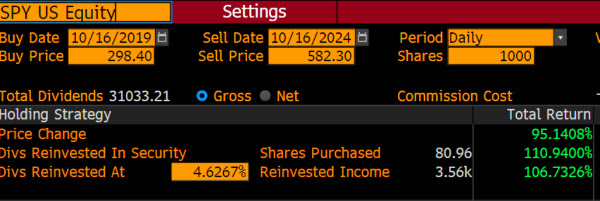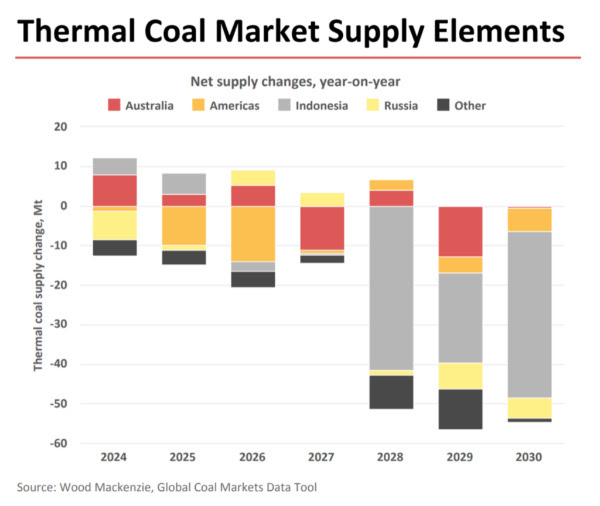Let’s work through a few options ideas for one to position for a big move in oil (something we see as an above average probability).
From the outset, we are rather bullishly positioned for a big move in oil, as we have been so for the last five years or more, so we probably don’t have to do too much extra in our portfolios.
Therefore, the ideas presented below are a few that folks could consider—a thought experiment, if you will.
Calls on Exxon
January 2027 options are now listed. Yup, two years from now could be considered a rather conservative time frame as it seems to us that if a big move up in oil is going to occur, it will likely centre around a "disturbance" in the force from the Middle East, which is building as we write. But experience tells us that whatever time frame you expect something to occur, more often than not it takes double that time to play out.
An out-of-the-money bull call spread — buying the $150 strike (at $9.0) and selling the $185 strike (at $2.5) against it for a total debit of $6.5 or $650 per contract/spread.
So, at $185, a 50% move in Exxon (NYSE:XOM) would equate to about a 430% return. A 25% move in Exxon is required to break even, and a 30% move for a 100% return.
These returns seem acceptable. If the price of oil takes off, Exxon could easily make a 50% move.
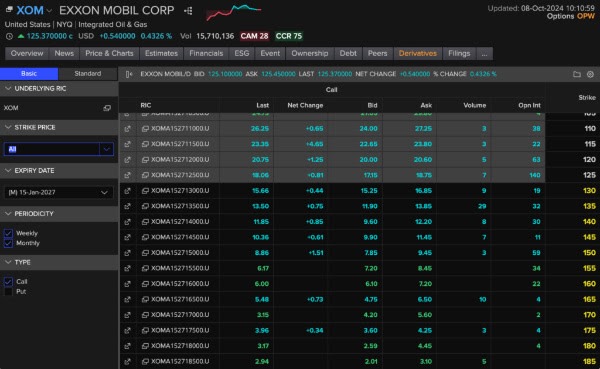
The big reason why the payoff looks reasonable is that it doesn’t appear that options are being priced for any big move in Exxon.
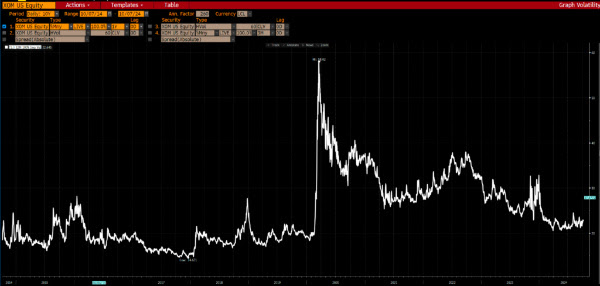
Perhaps this is also a reflection of just how out of favour oil stocks are. Over the last month or so we have been highlighting how sentiment towards oil futures is the worst since 2011 (and that is only because we have been unable to get records going back any further). It also seems that this extreme negative sentiment is echoed in energy related stocks.

Sometimes just a few short paragraphs are all you need:
Goldman Sachs, as one of the biggest providers of lending and trading services to investors through its prime brokerage unit, is able to track hedge funds’ investment trends.
Overall, Goldman Sachs said hedge funds’ trading book was underweight energy stocks at levels approaching a May 2020 low. It added, hedge funds increased their short bets on U.S. energy stocks, besides oil, gas, consumable fuels and energy equipment and services.
And here’s a pictorial representation:
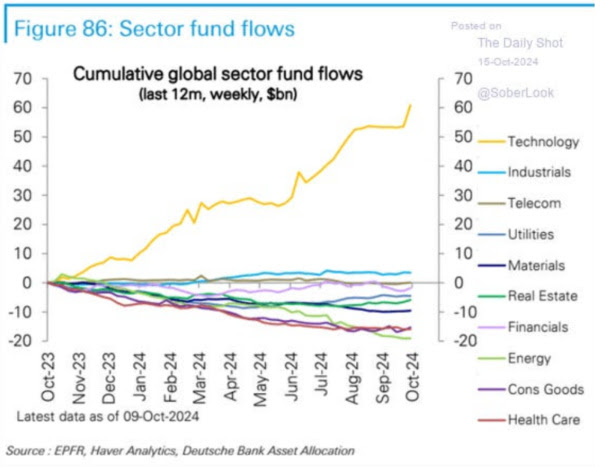
Here’s another way of looking at it, from a longer-term time scale.
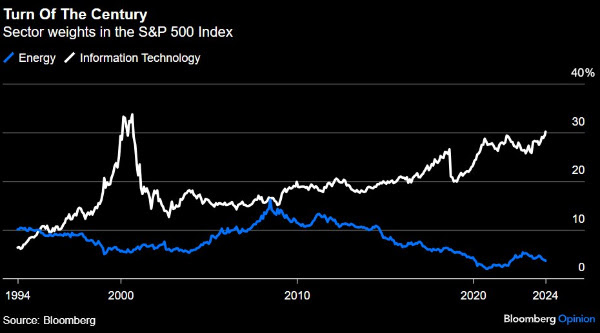
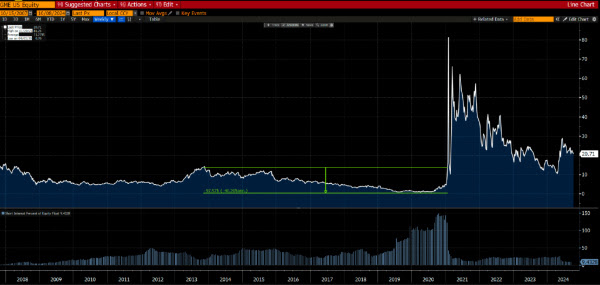
Then something bizarre happened. In 2020, the stock started to rise. Come 2021, it was up about 80x from where it was trading at the start of 2020. If someone had casually put $10,000 into Gamestop at the start of 2020 (or more or less at any time during the first half of 2020) and then sold somewhere in mid-2021, that $10,000 would have become $600,000. No isht! $10k into $600k.
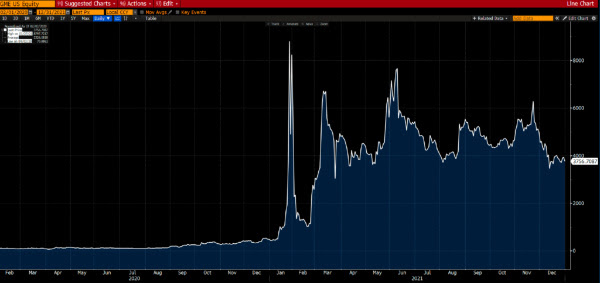
On the other end of the Gamestop long trade was Melvin Capital run by Gabe Plotkin as Wiki explains:
In 2014, with a $200 million investment from Cohen, Plotkin founded Melvin Capital Management, a New York-based hedge fund which he named after his grandfather. It had $3.5 billion under management by 2017. In 2017, with $300 million in earnings, he was one of the highest-earning hedge fund managers.
This increased to over $850 million in 2020, placing him in the top 15 highest-earning hedge fund managers. However, his compensation decreased in 2021, due to the impact of the GameStop short squeeze on the fund. Despite receiving $2 billion from Kenneth C. Griffin and $750 million from Steve Cohen, on May 18th, 2021, Bloomberg announced Melvin Capital went defunct shorting GameStop and Gabe Plotkin would be shutting down his firm.
And the wind-down of Melvin Capital, as explained by Bloomberg.
So what is the moral of the story here? Well, the big one is to always ensure that asymmetry is on your side. It would seem that this book never found a place in Plotkin’s library — it was a great narration of the LTCM crisis, otherwise known as the Long Term Capital Management crisis.
It is ok to put 1% of your capital into something and it drops by 50% or goes to zero. All that happens is your ego gets bruised and you feel like a dope for a bit.
However, risking 1% of your capital, only to see it become a 20%, 30%, or 50% liability (pick a figure) is terminal.
If you want big returns, don’t short-sell (or have any position that creates leverage or a liability in your portfolio), even if it is just a small insignificant amount. We all underestimate volatility (or as Einstein put it, human stupidity). Rather, invest your money in a collection of beaten-up dogs like this one (Seatrium):
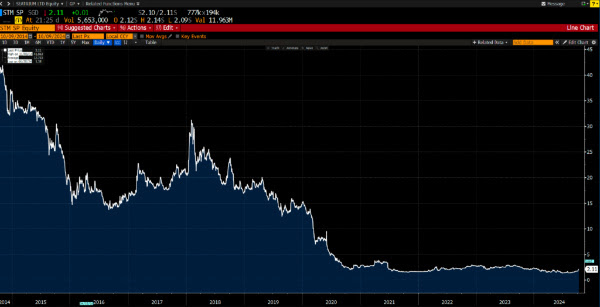
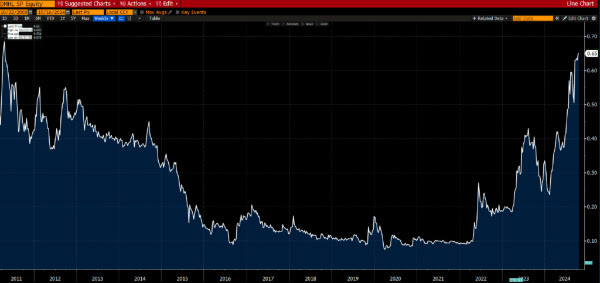
The Toxic Waste That Is Coal
Here we have more evidence of how tough it is for coal miners and coal-fired power stations to operate, let alone expand their business.
The Vales Point power station isn’t insignificant as it accounts for about 10% of NSW’s electricity capacity and 4% of Australia’s.
If it failed/shut down, there would almost certainly be blackouts as there isn’t much spare electricity generation capacity (of the base load variety) on the national grid. Yet, the banks are seemingly happy for this to happen. Talk about self destruction!
While we can’t jump to conclusions based on one news item, this does reinforce our thinking that people are dreaming if they believe coal faces an excess of supply.
Here’s New Hope Coal (OTC:NHPEF), and we are happily collecting those dividends. That’s a 120% stock price return since 2019 but close to 350% if you had the wisdom to reinvest your dividends.

Here is a comparison between returns of New Hope Coal, the S&P 500 (SPY), the Nasdaq (QQQ), and the ASX 200 (IOZ). A boring old coal miner with returns double the Nasdaq. Call us boring, but we will take the money over glam.

